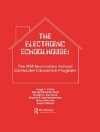This timely text, written by experts in research, practice and training in the field, proposes a whole-school community approach to the reduction and prevention of school violence. Underpinned by recent research findings, the book is illustrated throughout with case studies, examples of good practice in action, ideas and resources including exercises, activities and checklists. The book covers:
– personal characteristics of perpetrators, victims and bystanders
– role of the family
– ethos and culture of the school
– quality of interpersonal relationships at school
– quality of the learning environment of the school
– links between school and community
The authors′ approach aims to promote non-violence , improve the climate of the school, enhance relationships among staff, pupils and parents, and to support the emotional health and well-being of all members of the school community. Strategies include preventative methods, provision for the individual needs of pupils and peer support, emotional literacy and restorative practice.
The authors also provide guidance on how to create a shared understanding of school violence, how to prepare for change and how to carry out an effective needs analysis in order to successfully address the issue.
This book is essential for practitioners, students in education and school management as well as local educational advisors.
Cuprins
1. Introduction
2. Understanding school violence
3. Working with the whole-school community
4. Preparing for change
5. Conducting a needs analysis
6. Children helping children through peer support
7. Emotional literacy in schools
8. Restorative practice
9. The Support Group Method
10. Whole-school community checklist: promoting a safe school environment












